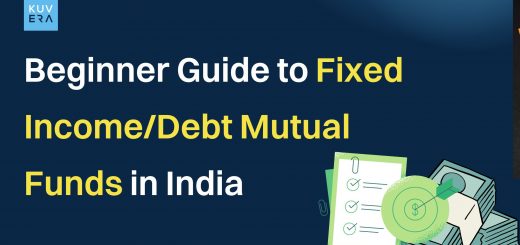 This is a guest post authored by the research team at Quantum Mutual Fund. It is one of India’s premier asset management companies with 1,440.45 Cr of Assets under Management as of 30th June 2020.
This is a guest post authored by the research team at Quantum Mutual Fund. It is one of India’s premier asset management companies with 1,440.45 Cr of Assets under Management as of 30th June 2020.
You must have often read or heard the disclaimer: “Mutual fund investments are subject to market risk. Please read the scheme related information carefully before investing.”
The questions that arise here are –
1/ What exactly are the risks?
2/ What are the scheme related documents that one should be looking at?
Scheme Information Document (SID) is an important document that provides you, the investor, with all the required information about a particular scheme while you consider deploying your hard-earned money. Reading the SID will provide you with the information needed to understand whether the scheme is suitable to your needs.
Many investors often invest in mutual funds based on the sales pitch of mutual fund distributors/ agents/ relationship managers. But are these sale pitches making you overlook some of the important facets you should take into consideration to make the right investment decision?
For instance, suppose a mutual fund intermediary recommends a popular scheme from a large fund house for you. If the scheme’s objective is not in line with your investment needs, it may be unsuitable for your investment portfolio. As an investor, it is important to make an informed investment decision. Understanding the SID and other scheme related documents can come to your rescue.
It is important to read the Scheme Information Document (SID) and Key Information Memorandum (KIM) along with Statement of Additional Information (SAI), which provides the statutory information about the fund house, before investing your hard-earned money and beginning the journey towards wealth creation.
Fund houses prepare the SID, KIM and SAI in the format prescribed by SEBI, the capital market regulator. They prepare documents in simple language, in a clear and concise manner for easy comprehension.
Let’s look at sections of the SID which you should understand well before investing your money in a fund.
1/ Investment objective:
The investment objective explains the aim behind launching a particular scheme. Examples of scheme objectives include long-term capital appreciation, consistent returns, and tax benefit. This section of SID also describes how the fund plans to achieve its objective. The scheme’s investment objective will help you understand whether it is in line with your investment goals or not.
If a scheme’s objective changes, AMCs mandatorily update the same in the SID.
2/ Investment amount, fees, expenses and load structure:
The SID mentions the minimum amount for different transactions in the scheme. This section mentions the investment amount in case of Systematic Investment Plan (SIP) and lumpsum transactions, the minimum redemption amount, and the minimum transaction amount in case of Switch, Systematic Transfer Plan (STP) and Systematic Withdrawal Plan (SWP).
The SID also details fees and expenses charged to the scheme viz. total expense ratio, transaction charges and exit load.
Expense ratio and exit load weigh on the net returns from a particular mutual fund scheme. A mutual fund scheme with a lower expense ratio might give higher net returns compared to its peers. However, the expense ratio is one among other factors to consider, and must not be the sole basis of the investment decision.
3/ The risk associated:
Mutual fund investing involves risks such as interest rate risk, concentration risk, liquidity risk, etc. These risks can potentially impact the growth of your investment. The risks associated with equity schemes differ from the ones associated with debt category.
SID describes the risk factors that could affect the performance of the scheme. Macroeconomic and sector-specific factors like changes in tax rates, political uncertainties, changes in regulations, demand-supply dynamics can affect equity-oriented schemes. Whereas factors like interest rate changes, credit worthiness, liquidity impact debt-oriented schemes.
SID also explains the measures that the fund will undertake to mitigate the risks. Examples include diversification, active management of the portfolio, liquidity management, etc.
This brings us to another important aspect of SID, i.e. Investment Strategy.
4/ Investment strategy:
Understanding the investment strategy to be followed under a particular mutual fund scheme is important before making the investment decision. This particular section of the SID explains the approach the fund manager will adopt to build and manage the portfolio, plus the exposure to the type of investment instruments within the respective asset classes. The investment strategy reflects the investment processes and systems followed by the fund house as a whole.
5/ Asset allocation:
This section of the information document indicates the proportion (in percentage range) a particular mutual fund scheme will allocate its assets under management to the respective asset classes (such as equity, debt and gold) under normal market conditions. The fund cannot breach the percentage range as stated in SID.
For example, a Large-cap Fund must invest at least 80% of its assets in equity of large-cap companies. The balance can be invested in other equities such as mid-caps and small caps, or debt and money market instruments.
A fund allocating a higher portion to riskier categories such as mid-caps and small-caps will be prone to higher volatility. Therefore, from the asset allocation, you can judge the risk profile of the scheme.
6/ Performance history:
In case of a mutual fund scheme which has been in existence for some time, the SID would also contain details about its past performances over various time frames and also the relative performance of the benchmark index. However, historic returns should not be the sole criteria, as past performance are not an indication of future performance.
While evaluating a scheme, consider performance over longer time frames, rather than the short-term performance. It is vital to assess whether the track record clocked by the respective mutual fund schemes meets the investment objective laid out. Understanding the portfolio characteristics of the scheme can help to get a sense of the future performance of the scheme.
7/ Fund management team:
The fund management team is directly responsible for the performance of the mutual fund schemes it offers. Hence, it is prudent to check the profile and experience of the fund manager.
Reading the SID will help you ascertain the suitability of a scheme and make an informed investment decision.
Happy Investing!
The opinions expressed are those of the authors and should not be construed as advice from Kuvera.
Disclaimer, Statutory Details & Risk Factors:
The views expressed herein this article/video are for general information and reading purpose only and do not constitute any guidelines and recommendations on any course of action to be followed by the reader. Quantum AMC / Quantum Mutual Fund is not guaranteeing / offering / communicating any indicative yield on investments made in the scheme(s). The views are not meant to serve as a professional guide/investment advice / intended to be an offer or solicitation for the purchase or sale of any financial product or instrument or mutual fund units for the reader. The article has been prepared on the basis of publicly available information, internally developed data and other sources believed to be reliable. Whilst no action has been solicited based upon the information provided herein, due care has been taken to ensure that the facts are accurate and views given are fair and reasonable as on date. Readers of this article should rely on information/data arising out of their own investigations and advised to seek independent professional advice and arrive at an informed decision before making any investments.
Risk Factors: Mutual Fund investments are subject to market risks, read all scheme related documents carefully.
Interested in how we think about the markets?
Read more: Zen And The Art Of Investing
Watch/hear on YouTube:
Start investing through a platform that brings goal planning and investing to your fingertips. Visit kuvera.in to discover Direct Plans and start investing today.










